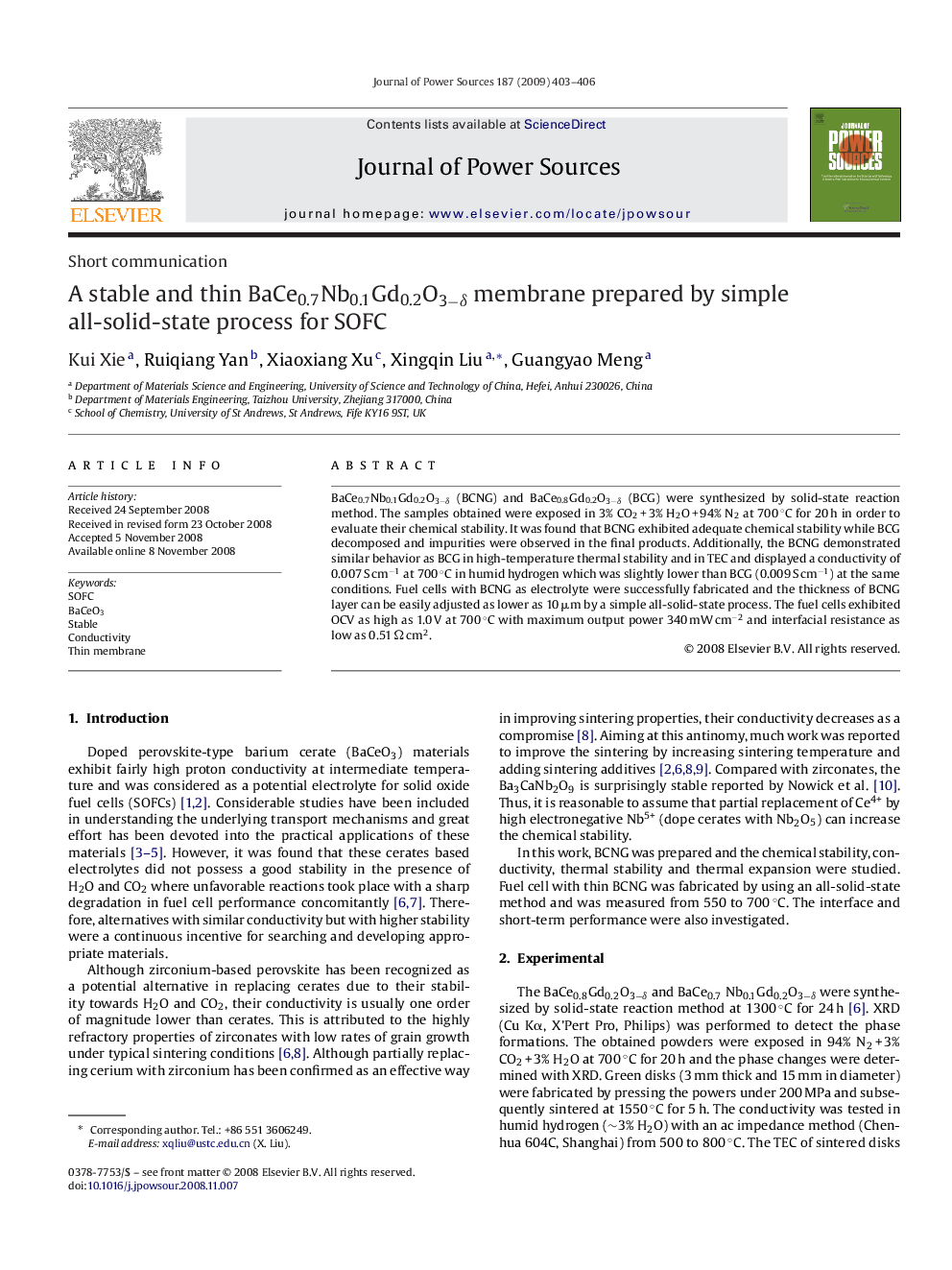| Article ID | Journal | Published Year | Pages | File Type |
|---|---|---|---|---|
| 1285240 | Journal of Power Sources | 2009 | 4 Pages |
BaCe0.7Nb0.1Gd0.2O3−δ (BCNG) and BaCe0.8Gd0.2O3−δ (BCG) were synthesized by solid-state reaction method. The samples obtained were exposed in 3% CO2 + 3% H2O + 94% N2 at 700 °C for 20 h in order to evaluate their chemical stability. It was found that BCNG exhibited adequate chemical stability while BCG decomposed and impurities were observed in the final products. Additionally, the BCNG demonstrated similar behavior as BCG in high-temperature thermal stability and in TEC and displayed a conductivity of 0.007 S cm−1 at 700 °C in humid hydrogen which was slightly lower than BCG (0.009 S cm−1) at the same conditions. Fuel cells with BCNG as electrolyte were successfully fabricated and the thickness of BCNG layer can be easily adjusted as lower as 10 μm by a simple all-solid-state process. The fuel cells exhibited OCV as high as 1.0 V at 700 °C with maximum output power 340 mW cm−2 and interfacial resistance as low as 0.51 Ω cm2.
